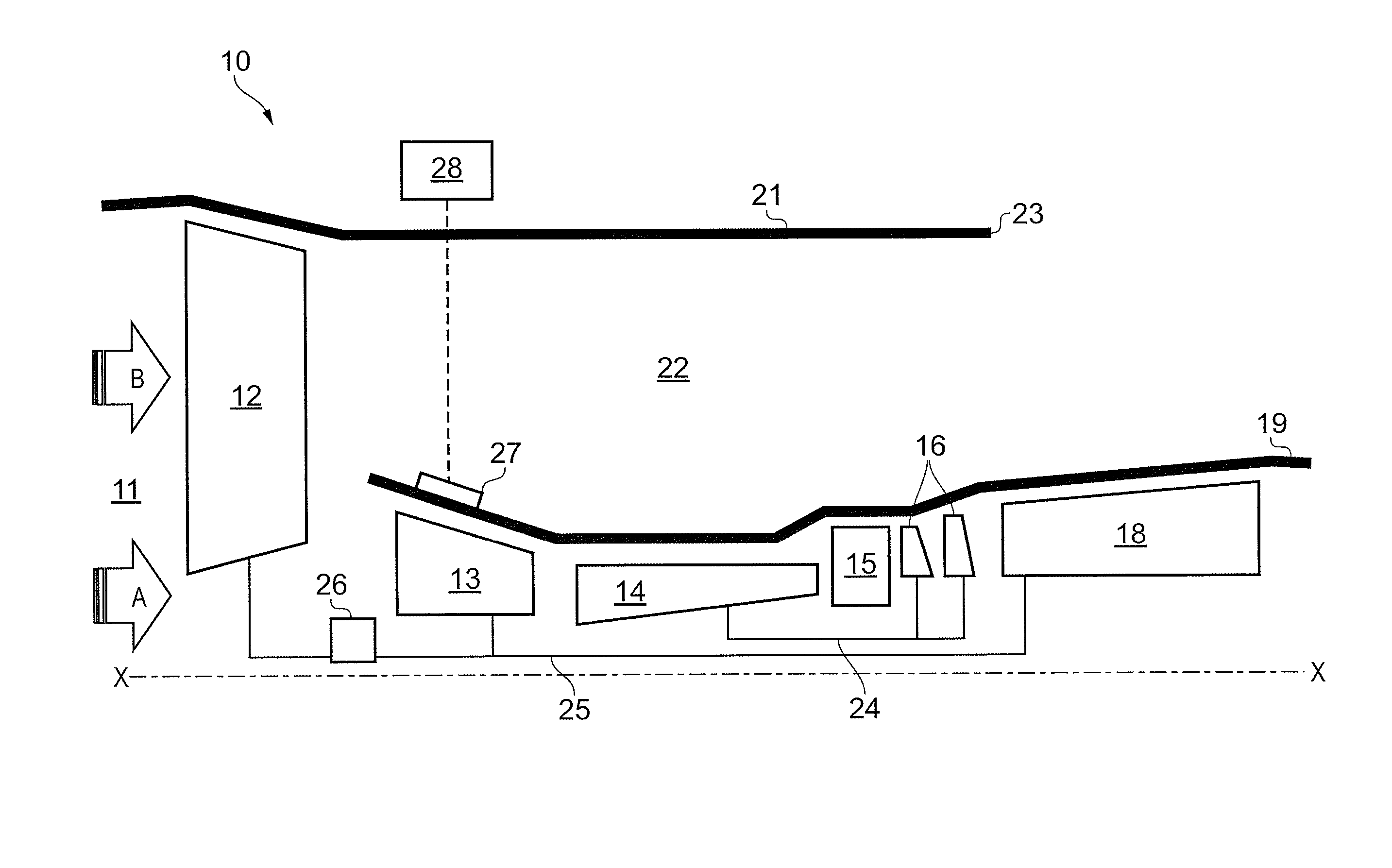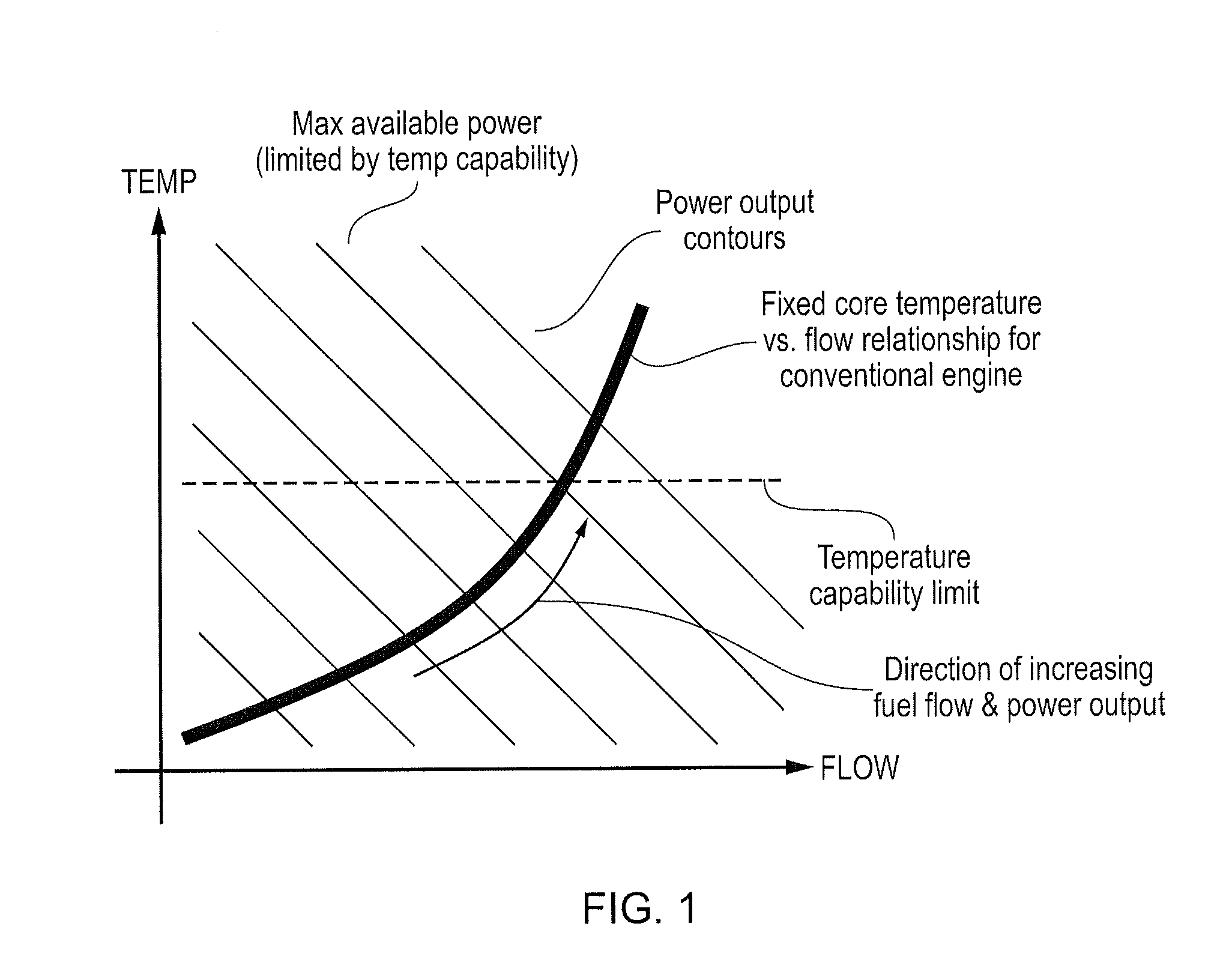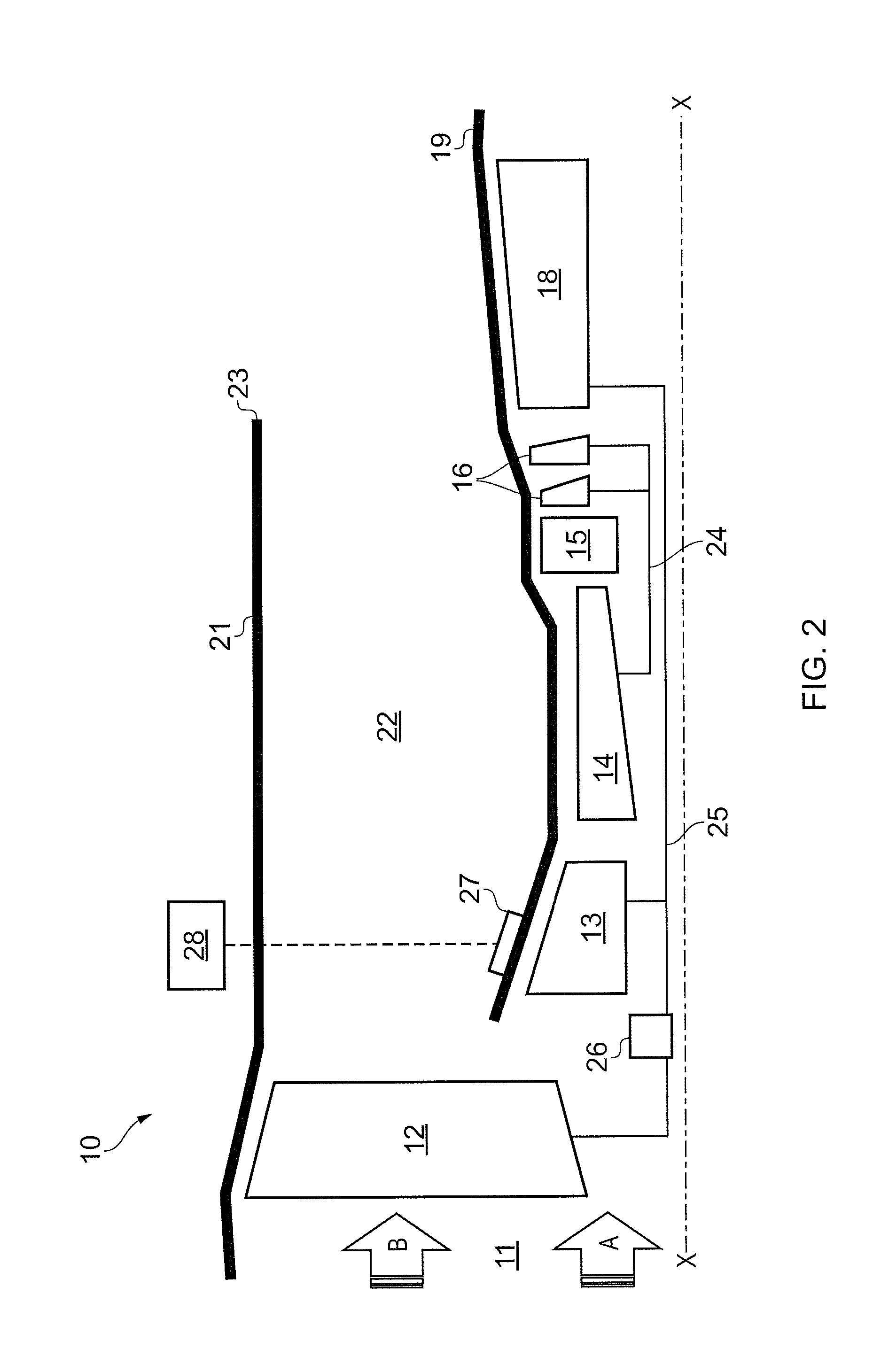Control of a gas turbine engine
a gas turbine engine and control technology, applied in the direction of machines/engines, efficient propulsion technologies, mechanical apparatuses, etc., can solve the problems of reducing the maximum power output capability of the engine, increasing the operating temperature, and placing a practical limit on the power output availabl
- Summary
- Abstract
- Description
- Claims
- Application Information
AI Technical Summary
Benefits of technology
Problems solved by technology
Method used
Image
Examples
Embodiment Construction
[0049]With reference to FIG. 2, a geared, ducted fan gas turbine engine incorporating the invention is generally indicated at 10 and has a principal and rotational axis X-X. The engine comprises, in axial flow series, an air intake 11, a propulsive fan 12, a booster compressor 13, a core compressor 14, combustion equipment 15, a core turbine 16, a low-pressure turbine 18 and a core engine exhaust nozzle 19. A nacelle 21 generally surrounds the engine 10 and defines the intake 11, a bypass duct 22 and a bypass exhaust nozzle 23.
[0050]During operation, air entering the intake 11 is accelerated by the fan 12 to produce two air flows: a first air flow A into the booster compressor 13 and a second air flow B which passes through the bypass duct 22 to provide propulsive thrust. The booster compressor 13 compresses the air flow A directed into it before delivering that air to the core compressor 14 where further compression takes place.
[0051]The compressed air exhausted from the core compr...
PUM
 Login to View More
Login to View More Abstract
Description
Claims
Application Information
 Login to View More
Login to View More - R&D
- Intellectual Property
- Life Sciences
- Materials
- Tech Scout
- Unparalleled Data Quality
- Higher Quality Content
- 60% Fewer Hallucinations
Browse by: Latest US Patents, China's latest patents, Technical Efficacy Thesaurus, Application Domain, Technology Topic, Popular Technical Reports.
© 2025 PatSnap. All rights reserved.Legal|Privacy policy|Modern Slavery Act Transparency Statement|Sitemap|About US| Contact US: help@patsnap.com



